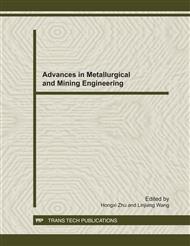p.742
p.747
p.753
p.758
p.766
p.771
p.775
p.780
p.784
Experimental Study on Decarburization in Heavy Rail Manufacturing Process
Abstract:
Through the metallurgical testing on a lot of samples from different parts of the heated slab and the finished product in heavy rail manufacturing process, analysis on the surface decarburization characteristics of U71Mn and U75V is carried out. Through analyzing the main affecting factors on the decarburization depth of heavy rail in the heating and rolling process, some effective means to reduce the product surface decarburization are put forward. The results show: (1) The surface decarburization depth distribution of heavy rail slab heated in the regenerative furnace is seriously imbalanced, and the fluctuation ranges between 30% -40%.(2) Under the same production conditions, decarburization of U75V is serious, and the average depth of U75V is more than 11% higher than the U71Mn. (3) The rolling process in the production of heavy rail has a great influence on the distribution of the surface decarburization depth. (4) Because the deformation rate of rectangle slab in the rolling process everywhere is different, in order to reduce the decarburization depth of finished product, it is useful to select the narrow surface of slab to generate the head of heavy rail, as well as to change the structure of the slab cross-section from right-angle to arc.
Info:
Periodical:
Pages:
766-770
Citation:
Online since:
November 2011
Authors:
Keywords:
Price:
Сopyright:
© 2012 Trans Tech Publications Ltd. All Rights Reserved
Share:
Citation:


